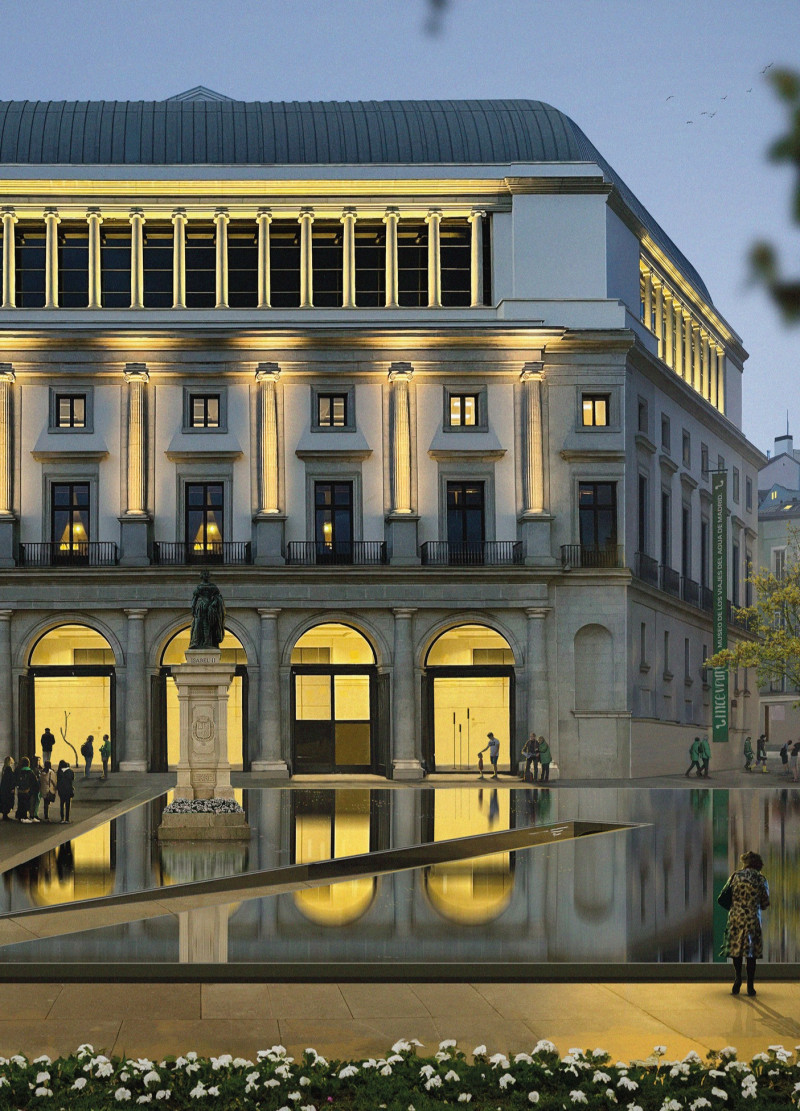5 key facts about this project
Functionally, the building is structured to accommodate a range of activities, reflecting an understanding of contemporary lifestyles. The layout consists of open-concept spaces that promote collaboration and engagement, while still providing areas for privacy and solitude. Key spaces within the project include communal gathering spots, flexible work areas, and dedicated zones for rest and relaxation. The careful arrangement of these spaces ensures that the building can adapt to the varied activities of its users throughout the day.
The architectural design of the project incorporates a variety of materials that contribute to both its visual language and practical performance. The use of concrete signifies durability and strength, forming the robust skeleton of the structure. Large expanses of glass create inviting façades that foster transparency and a close relationship with the surrounding landscape, allowing natural light to flood the interior. This strategic use of materials not only enhances the aesthetic qualities of the architecture but also supports energy-efficient practices through passive heating and cooling strategies.
A notable feature of this project is its unique roof design, which serves multiple purposes. The sloped roof facilitates rainwater harvesting, contributing to the building's sustainability goals, while also allowing for additional usable space, such as green terraces that can host social gatherings or serve as private retreats. The integration of landscaping into the building's design promotes biodiversity and connects the human experience with nature.
Unique design approaches can be seen throughout the project, particularly in the incorporation of biophilic design principles. The architects have made an effort to blend indoor and outdoor environments, creating spaces that encourage occupants to engage with nature, which has been shown to enhance well-being. Elements such as indoor gardens, green walls, and large operable windows provide fresh air and views of the surroundings, fostering a sense of place and tranquility.
Moreover, the architectural plans reveal an intention to create a fluid transition between different areas within the building. This is accomplished through the use of varying ceiling heights, open sightlines, and strategically placed voids that allow light and air to circulate freely. Such design ideas not only improve the functionality of the spaces but also create a more dynamic and enjoyable atmosphere for all users.
Incorporating sustainability in both material choices and construction techniques, the project exemplifies a modern approach to responsible architecture. The use of recycled materials where possible and a careful selection of finishes that reduce environmental impact demonstrate a commitment to ecological stewardship. These decisions not only benefit the building itself but also set a precedent for future architectural endeavors in the region.
In summary, this architectural project represents a harmonious fusion of design, function, and sustainability. It offers a glimpse into how thoughtful architecture can enhance daily life and promote a deeper connection with the environment. For those interested in a comprehensive understanding of this design, exploring the architectural plans, sections, and overall design ideas will provide valuable insights into its conception and realization. Delve into the details presented to gain a fuller appreciation of the innovative solutions that have been employed throughout this remarkable architectural endeavor.


 Juan Teixeira Zapata
Juan Teixeira Zapata 




















